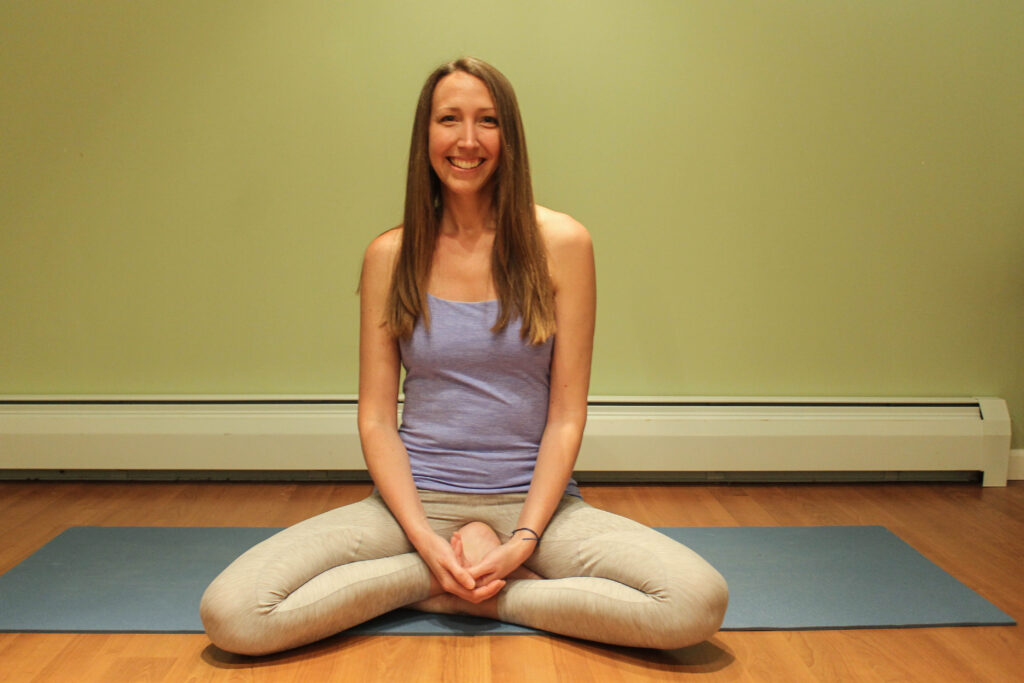Brahmacharya, one of the yamas of the Yoga Sutras, is translated as celibacy (Bryant, 243) or continence (Tiguniat, 164).
In addition to these two translations, brahmacharya was explained to me as right use of energy, moderation of the senses and not using sexual energy or acts to cause harm.
Rolf Sovik’s explanation below helps clarify the different translations and applications of brahmacharya:
“Literally, brahmacharya translates as “walking in God-consciousness.” Practically speaking, this means that brahmacharya turns the mind inward, balances the senses, and leads to freedom from dependencies and cravings. Yogis tell us that when the mind is freed from domination by the senses, sensory pleasures are replaced by inner joy.
The term brahmacharya is sometimes identified with celibacy, but while the preservation of vital energy through moderation in sexual activity is part of brahmacharya, this is a narrow view of the practice. In Vedic culture, the word brahmacharya denoted the first of four stages of life—that of the student. In this stage, the aspirant spent all his time with a spiritual teacher, and that was, quite naturally, a celibate time. The word also refers to a vow of celibacy taken by a sannyasi, or a renunciate. However, in the context of the yamas, brahmacharya refers to a middle path of restraint. Both overindulgence and repression can deplete your vital force; both can leave you insecure and anxious. By controlling the senses—by practicing brahmacharya—one travels in God-consciousness rather than on the path of the sense objects.”

In my experience, brahmacharya is the least spoken of yama. This seems to parallel the broader attitude about sex I was exposed to growing up. It’s mentioned with a sense of discomfort in limited terms, without an invitation to discussion, and with little education that would lead to any sense of empowerment. A friend of mine and fellow yoga practitioner recently expressed this concern: “Sex isn’t openly spoken of. It is a concern of mine that violence is normalized, openly expressed and expected for children to imbibe, but the potential love in a sexual coupling is hidden and shameful. The extent to which sex has been twisted into power displays is horrifying.”
She posits: “If all practice is rooted in ahimsa, brahmacharya can be a practice of non-weaponized sex. More than refraining from assaulting people, staying aware of desire impulses and choosing to act when the intimacy is welcome and appropriate. Physical desire is one of the most basic of human instincts. To perpetuate the species is a drive so deep and primal it has grown out of control without honest and open communication about the topic.”
Can we use our inquiry practices to examine the roles of jealousy, living in scarcity, and internalization of external expectations as they relate to brahmacharya?
Mary-Margaret Sweeney, LCSW, founder of www.seekandsummon.com offers these questions:
“What if the ways we moved in our erotic life mirrored the yoga practice, were also done in pursuit of wholeness, integrity of self, and peace? What if our sexual experiences were mindful, bringing us to presence in our bodies, in our minds, and in our spirits? When we engage in sexual experiences we have chosen to engage in, can we begin to see them as healing and integrative?”
Citations:
Bryant, Edwin. The Yoga Sutras of Patanjali. New York. North Point Press. 2009.
Sovik, Rolf. Brahmacharya: The Middle Path of Restraint. Yoga International Blog. 3/2/22. Link to Post.
Sri Swami Satchidananda. The Living Gita. Virginia, Integral Yoga Publications. 1997.
Sweeney, Mary-Margaret. “Yoga and Sexual Health Education”. seek and summon blog. 10/1/2018. Link to Post.
Tigunait, Rajmani. The Practice of the Yoga Sutra – Sadhana Pada. Honesdale, The Himalayan International Institute of Yoga Science and Philosophy. 2017.

Meghan Hogan, E-RYT 500, CCC-SLP is Lead Faculty for the Yoga Vidya Teacher Training and In-Depth Studies program, a Speech-Language Pathologist supporting preschool children with disabilities and their families, a wife and mother.
Her mission in sharing yoga is to provide caregivers of all walks of life tools for self-care and stress management.

